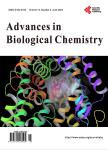Glycation Induced Physicochemical Changes in Low-Density Lipoprotein and Its Role in Promoting Cholesterol Accumulation in Macrophages along with Antiglycation Effect of Aminoguanidine
Glycation Induced Physicochemical Changes in Low-Density Lipoprotein and Its Role in Promoting Cholesterol Accumulation in Macrophages along with Antiglycation Effect of Aminoguanidine作者机构:Department of Medical Biochemistry College of Medicine and Medical Sciences Arabian Gulf University Manama Kingdom of Bahrain Department of Biochemistry Faculty of Life Science Aligarh Muslim University Aligarh India Department of Pathology Hamdard Institute of Medical Sciences and Research Hamdard University New Delhi India
出 版 物:《Advances in Biological Chemistry》 (生物化学进展(英文))
年 卷 期:2015年第5卷第5期
页 面:203-214页
学科分类:1002[医学-临床医学] 100214[医学-肿瘤学] 10[医学]
主 题:Glycation LDL-AGEs D-Fructose Aminoguanidine Diabetes-Induced Atherosclerosis
摘 要:The present study aimed at investigating physicochemical changes in modified LDL by sugars specifically fructose due to recent reports on its involvement in cardiovascular diseases and also glucose and their role in subsequent in vitro accumulation of cholesterol in macrophages. Antiglycation action of aminoguanidine was also investigated. LDL isolated from human blood was incubated with fructose or glucose and aminoguanidine where indicated. The physicochemical changes in modified LDL were detected by electrophoretic, spectroscopic and chemical analysis. Accumulation of cholesterol and its inhibiton in human monocyte-derived macrophages incubated with modified LDL was determined by HPLC. Results showed increased relative electrophoretic mobility, hyperchromicity at 280 nm, development of AGE fluorescence, decrease in free amino groups and increased carbonyl content in glycated LDL as compared to native LDL. Also total cholesterol accumulated in macrophages was more for glycated LDL as compared to native LDL. The magnitude of changes was more prominent in case of fructose as compared to glucose. Aminoguanidine showed remarkable restriction of glycation-induced alterations in LDL and also in accumulation of cholesterol in macrophages. The study thus proclaims that LDL-AGEs formed by fructose may contribute to accelerated initiation of diabetes induced atherosclerosis via foam cells generation and aminoguanidine may have therapeutic potential against it.



